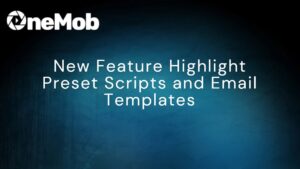If the rumors are true, then Sales Enablement 3.0 is upon us, and this puts us sales and tech professionals at yet another split in the road: to continue down the current path with our social selling and email tracking, or take a slight left at the bend and see what new concepts have surfaced.
If you’ve had your ear to the ground lately, you’d agree we’re moving towards heavier sales automation, predictive sales intelligence and video messaging. Given sales automation is the most established, and sales intelligence is difficult enough for the wisest and most experienced — take a go with video messaging.
Primarily, we need to understand what video messaging is to the B2B space and then what value it provides to sales messaging and pipeline generation.
What is it?
In its simple elegance, video messaging is recording and sending sales and marketing messaging via email. Sending video in B2B sales, as prospects have told me, is a novel concept. The goal is to create a video for your audience, whether it’s to set a new meeting to a specific person or to promote awareness for your event/cause to a broader audience.
How does it work?
There are a small handful of video messaging platforms for recording and sending video messages. Features and quality vary, including CRM integrations, mobile apps, corporate branding and even DNS set-up for the enterprise crowd. With OneMob you can have all of these features, plus the technology for a recording and sending solution that is both trackable and scalable.
Why would I do such a thing?
1) Video thumbnails deliver the highest CTRs
This is where message differentiation comes into play. The majority of buyers already think you and your competition are more-or-less the same (via The Challenger Sale). If your messaging looks alike, then they’re ignoring your email all the same. That being said, there’s no better means of driving high CTRs than a video thumbnail (MarketingProfs). So if you need your initial message to be received, include a video. This is a personal, digital approach and is best for top tier accounts. Since great sales people take the time to know their audience and tailor their message, do yourself the favor and give your great messaging the best odds of being seen.
2) It doesn’t get more personalized or trustworthy
Sales automation has made sales people seem like robots. There’s minimal room for personalization, so most emails look the same at first glance. Seeing a smiling face, a company logo, plus physically hearing and seeing the sales person carries weight — the type of weight sales people long to replicate via their rare and invaluable face-to-face meetings. If I had a dollar for every time a prospect noted I’m “the guy with a beard from the video” as we began our first meeting, I’d have enough dollars for Chipotle for me and a friend, plus guac.
Keeping in Mind…
Video is an additional outlet to phone calls and emails that go hand-in-hand with any sales position. In a time where sales automation is becoming bigger than ever, video is pitching value via a wider and more consistent net. While phone and email aren’t going away anytime soon, video is looking to be the next accepted addition, creating the Big Three in foundational sales outreach. So, while the sales effectiveness space is preaching volume, video is singing personal touch.
About the Author: Devin Reed is the newest member to the Sales team at OneMob as a Sr. Account Executive and author of The Reeder. Having spent his career in technology sales, specifically on ROI-focused software selling at the executive level, he credits audience analysis as the success of his outreach, along with overcoming the fear of clicking “Send” on those not-so-ordinary emails to top executives.







